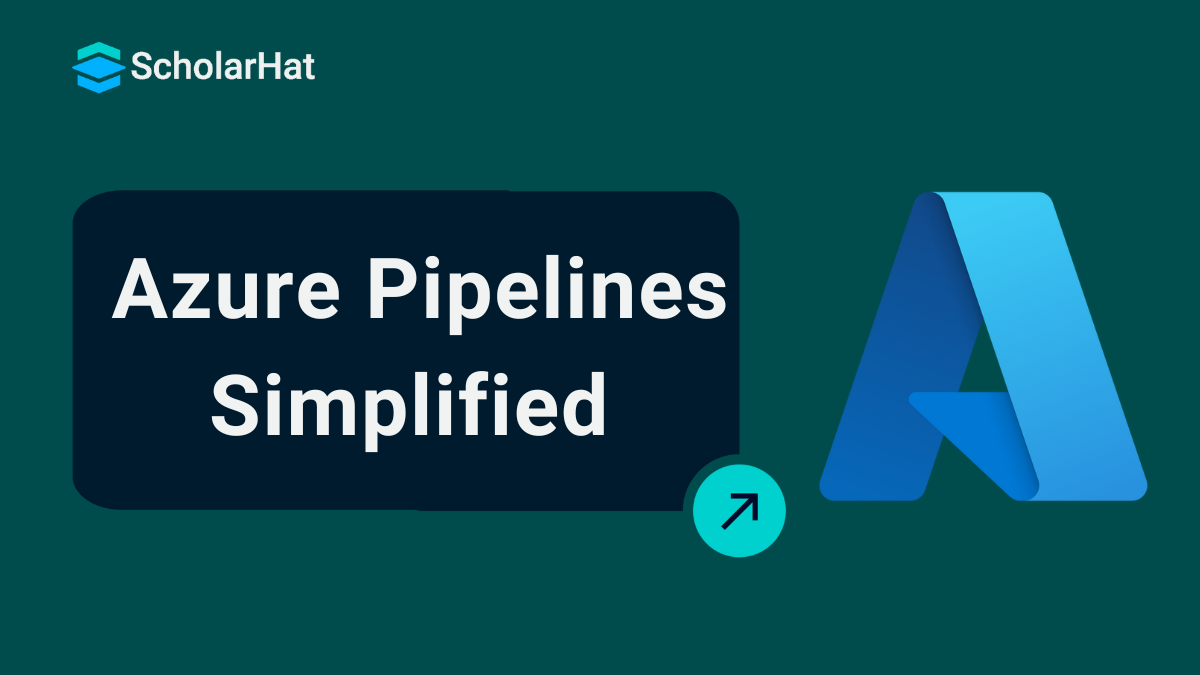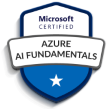19
DecAzure Pipelines: A Complete Guide to CI/CD Automation
Azure Pipelines
Azure Pipelines is the sequence of steps that automate processes such as application deployment and data migration. Imagine it as an assembly line, where each step advances the next to finish a more complex process. For example, data may be moved from one storage place (like a database) to another (like a data warehouse) via a pipeline in Azure Data Factory. Along the route, it may clean, alter, or analyze the data.
In the Azure tutorial, you will learn about What is Azure Pipelines?, Why do we use Azure Pipelines?, How to Use Azure Pipelines?, Creating an Azure DevOps Pipeline, Azure Pipelines for Continuous Delivery (CD), Azure Pipelines vs Jenkins, and many more. 65% of cloud-related jobs will require Azure Fundamentals knowledge. Start your journey with our Free Azure Fundamentals Course today!
What is Azure Pipelines?
Microsoft offers Azure Pipelines, a cloud-based service that generates and tests code projects automatically. It works with every major language and kind of project. Code can be tested, built, and sent to any destination using Azure Pipelines' combination of continuous integration (CI) and continuous delivery (CD). It also provides a safe and effective means of automating builds and distributing them to end users.
Why do we use Azure Pipelines for CI/CD?
We use Azure Pipelines for some operations because it performs efficiently in such cases that are:
- Automation: Builds and tests are automatically completed, allowing for the early detection of problems.
- Guarantees Code Quality: Works with tools to verify the security and quality of the code.
- Accelerates Delivery: Apps are swiftly deployed to various environments (stage, production).
- Accommodates Various Platforms: works with a variety of platforms and programming languages, including Java, Python,.NET, etc.
- Facilitates Collaboration: Groups may cooperate and change code continually without running into problems.
- Offers Flexibility: Provide flexibility pipelines that are adaptable to certain surroundings and processes.
| Read More: |
| Azure Skills in Demand 2024! |
| Azure Roadmap to Become Azure Developer |
| Cloud Engineer Roadmap 2024: Role, Skills, and Salary |
| How to Build a Career with Microsoft Azure Certifications |
Key Features of Azure Pipelines
The key features of the Azure Pipeline are :
- CI/CD Automation: Automates the entire build, test, and deployment process.
- Multi-Platform Support: Works with multiple platforms like Windows, Linux, and macOS.
- Cloud and On-Premise Integration: Deploys to cloud (Azure, AWS) and on-premise servers.
- YAML Pipelines: Pipelines can be defined and version-controlled using YAML configuration files.
- Build and Release Management: Manages different versions and releases of software efficiently.
- Parallel Jobs: Supports parallel job execution to speed up builds and testing.
- Customizable Tasks: Allows custom tasks or uses pre-built tasks from the marketplace.
Creating an Azure DevOps Pipeline
Let us see the steps to implement build automation and deployment automation with Azure DevOps Pipelines.
Create Your Azure DevOps Organization
The first step is to navigate to https://dev.azure.com and sign-in to Azure DevOps. You need to create at least an organization to store your projects and your repositories.
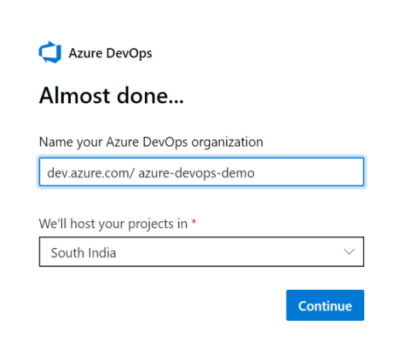
Please visit Microsoft’s documentation for more advance organization scenarios.
Create a Project
Please create an Azure DevOps project by selecting values like visibility, source control etc.

Create a Build Pipeline
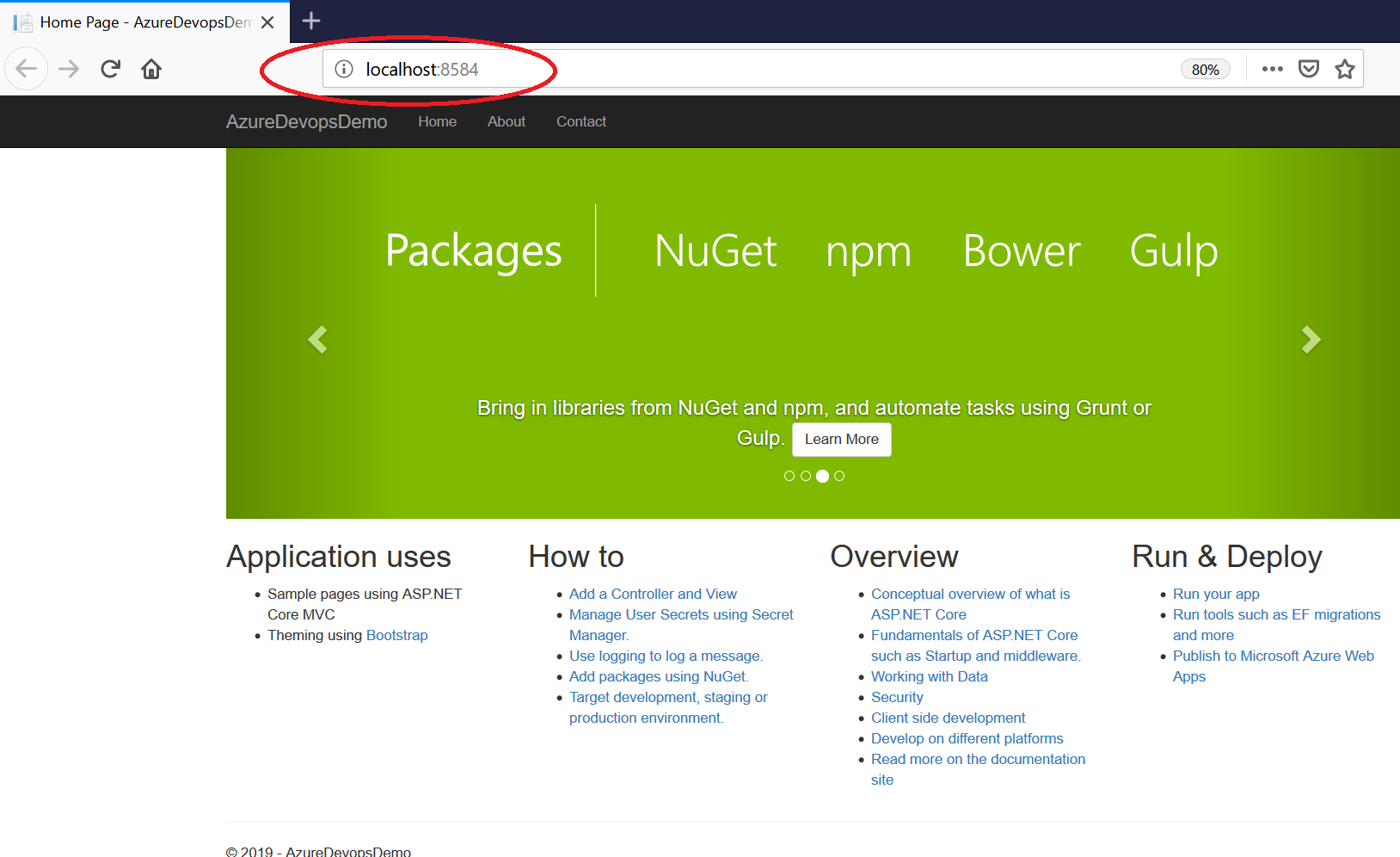
I have created a sample .net core app and it is running on my machine. Now I want to set up a CI-CD pipeline for this application using Azure DevOps. Please select the build option from the pipeline menu to set up the build pipeline.
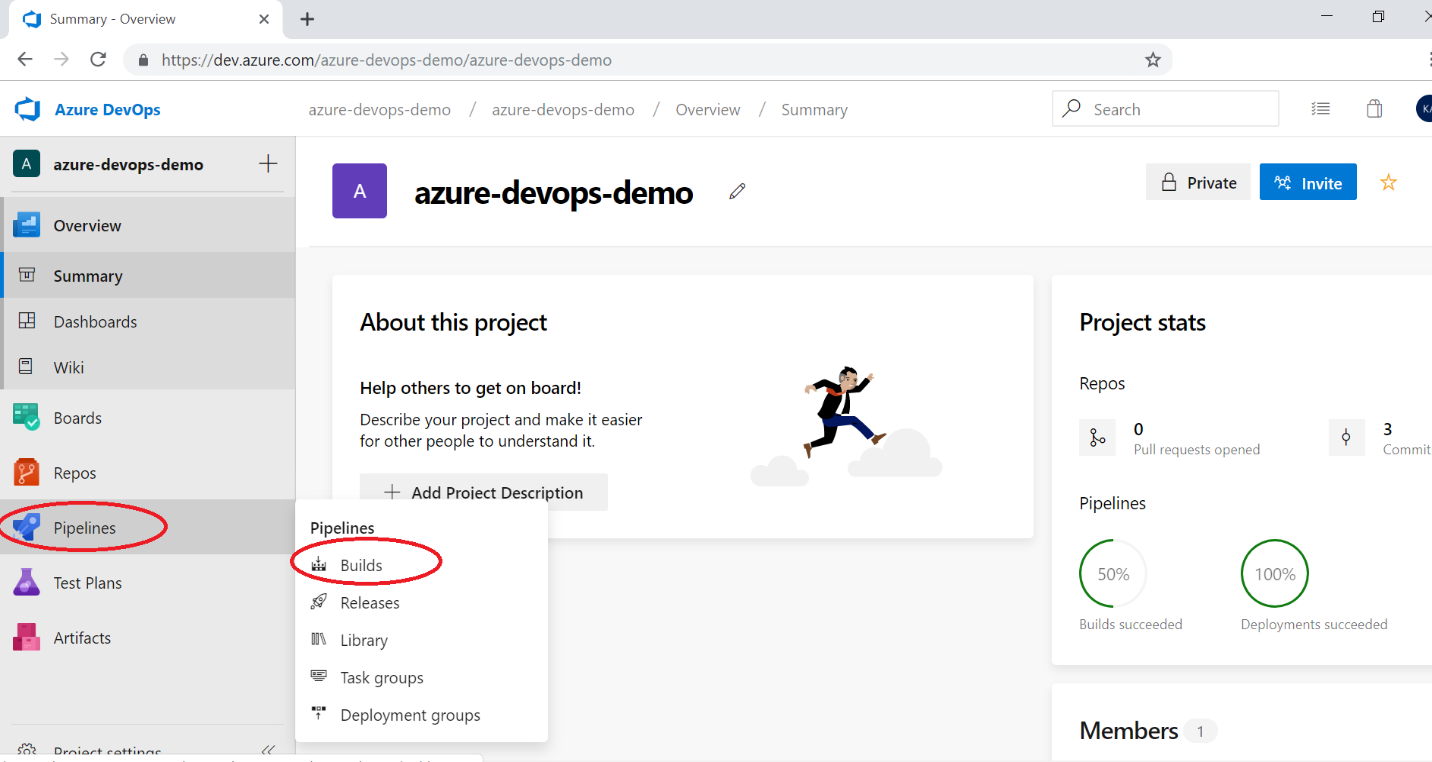
Now, choose a build template provided by Azure DevOps, as shown below.

I can also select the TFVC version control system or GitHub if I want to as source code. Now give a name to build definition. Please select an appropriate solution file to build & location to save build artifacts. These artifacts will be used as input to the release pipeline. You can see which artifacts. Azure DevOps provides multiple predefined templates to build applications developed in Java, node.js, PHP, etc.
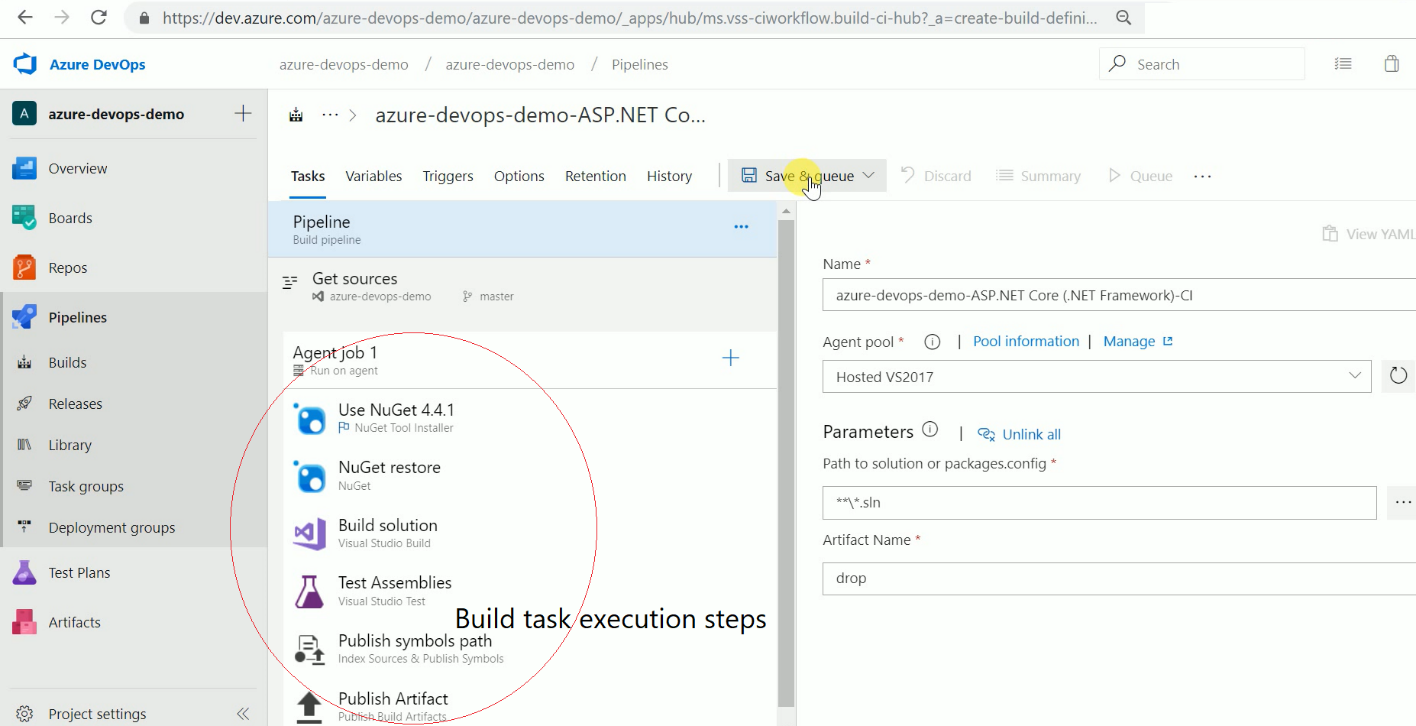
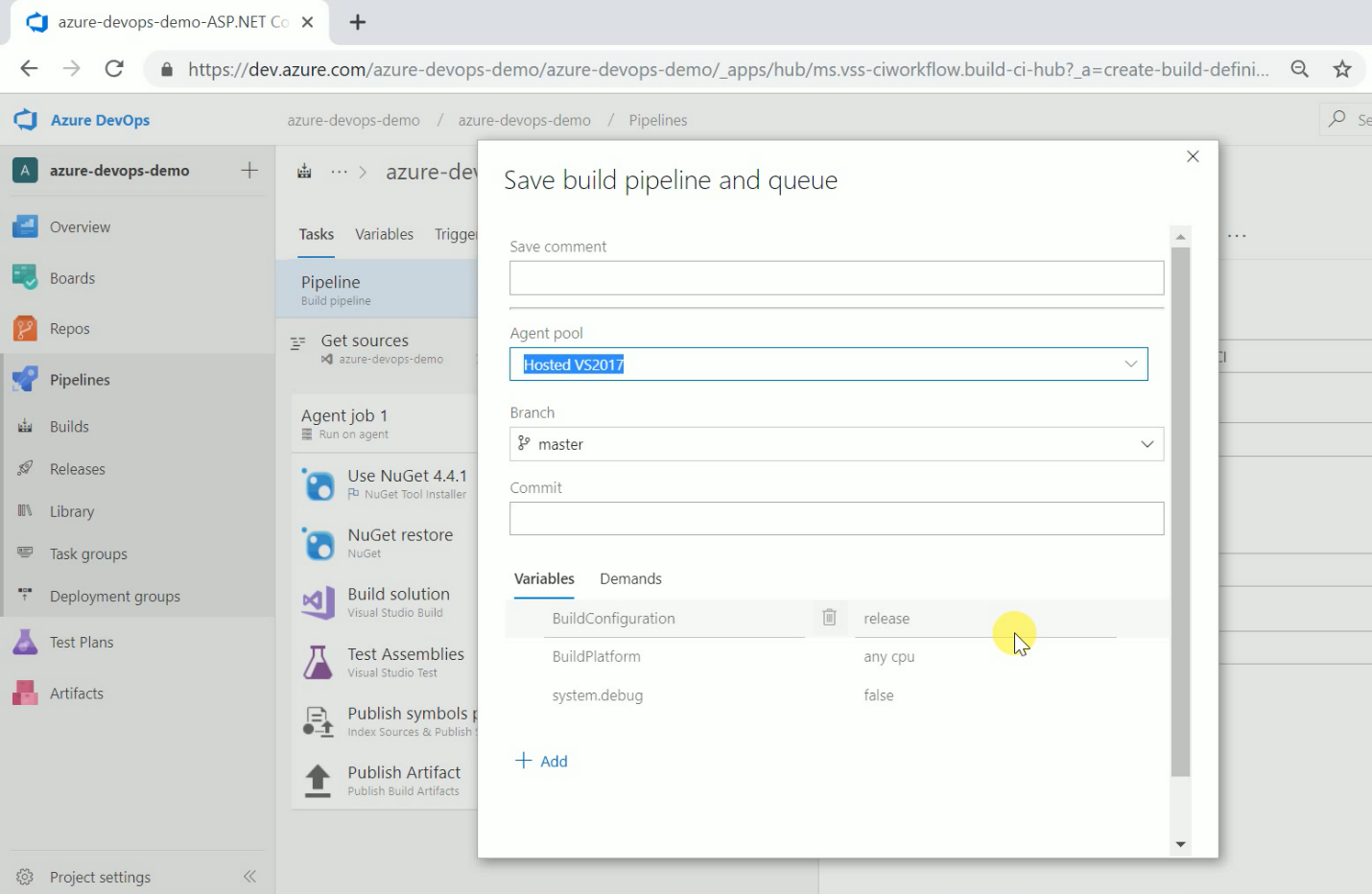
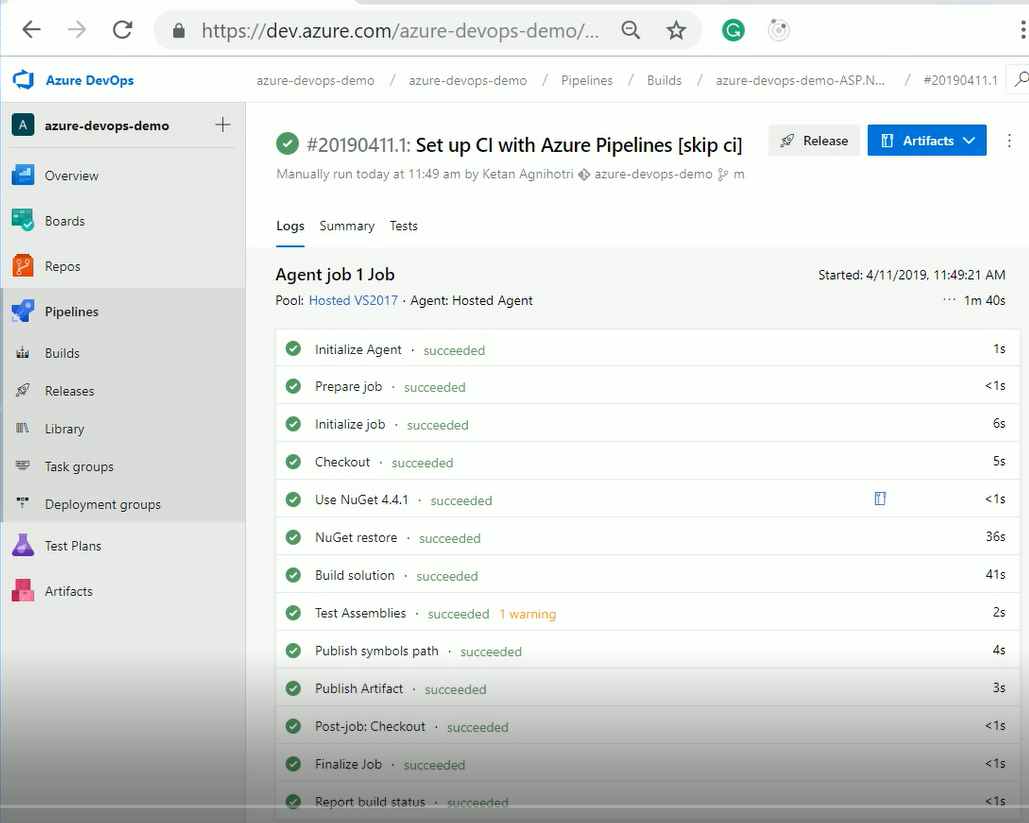
Create a Release Pipeline
Now once the build succeeds, we need to create a release definition. You can select the release menu from the pipeline or click on the release button as shown below. When you get into the release pipeline screen, you’ll need to select a template.

Azure DevOps has provided a lot of predefined templates for deployment. Some of them are as follows
Azure App Service Deployment with Test and without Test
Azure App Service Deployment with continuous monitoring
Cloud Service Deployment
On-Premise deployment
Azure VM Scale Set
Service Fabric (Stateful/ stateless)
Azure Policy Deployment
Function App to Azure
We can create our own custom template as well as per our requirements.
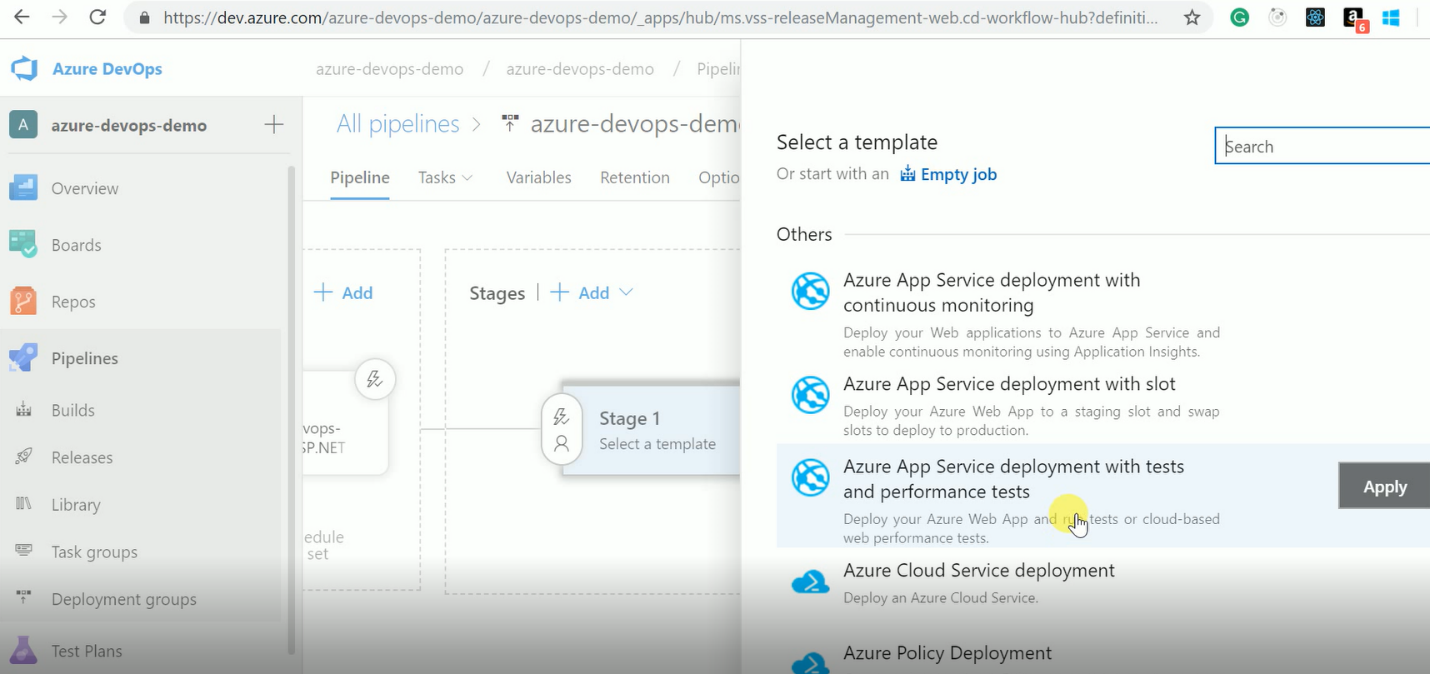 Figure 9. Choose Release Template
Figure 9. Choose Release Template After selecting the template, we can add tasks so that we can deploy a build multiple environments like dev, test, UAT, etc. We can add a particular use as a release approver as well. We can set the variable values which are used in the release definition. You can convert those templates to YAML in a later stage as well and then check in version control if you want. You see that there are all kinds of pre-defined templates for your builds.
So for example, a Gradle build or a Go build, or you want to do some load testing, or you want to do Xamarin app for iOS, Ant builds, you name it; it's all there and part of the out-of-the-box experience. Azure DevOps has things like NuGet restore, Test Assemblies, Build the solution, and all kinds of things that we can pick from the task picker.

After saving the release definition, you can create a new release. You can choose environments for release if you have added multiple release tasks.
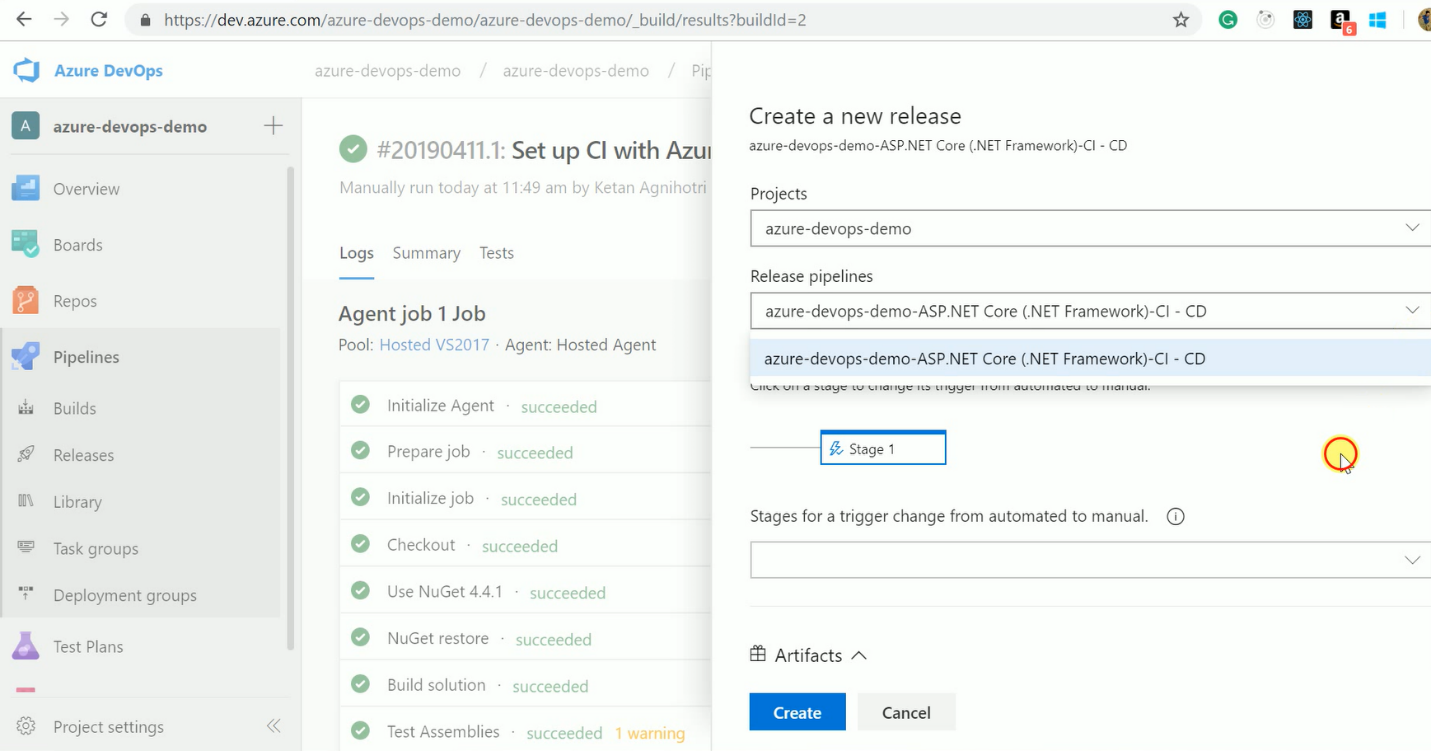
After creating a release, we can track release progress as shown below.

We can enable pre-deployment approvals as shown below. Now, what happens when I do a deployment and the deployment fails? Well, I can select to re-deploy the previous well-known stable deployment so I'm always in a good state again, which is quite handy. So that's a way we can define those post-approvals before we move to the next phase in our deployment.
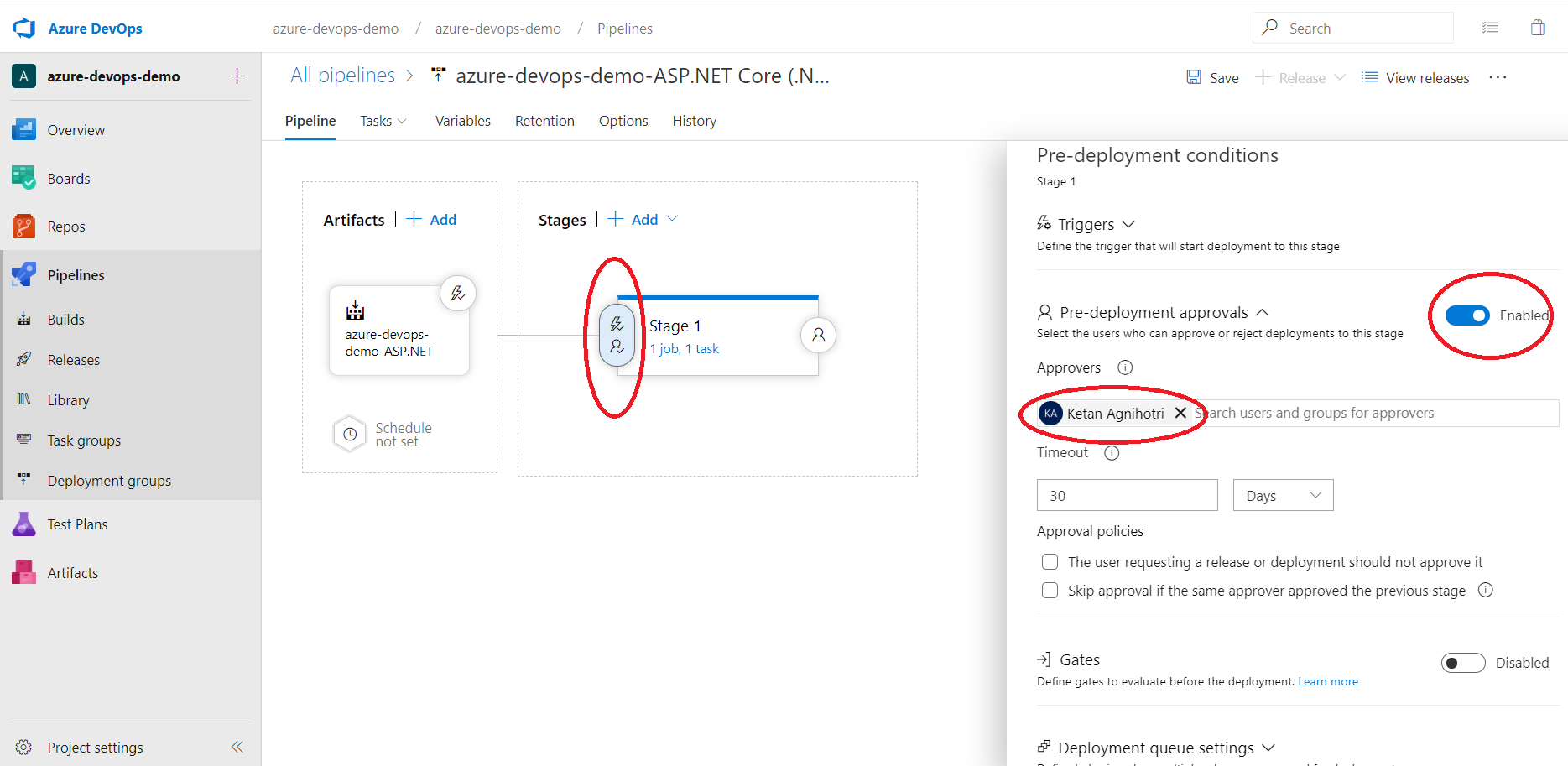
Azure Pipelines for Continuous Delivery (CD)
Azure Pipelines for Continuous Delivery (CD) automates the process of deploying applications to various environments, ensuring smooth and reliable releases. This allows new features, updates, or fixes to be delivered quickly without manual intervention.
- Automated Deployment: Code is automatically deployed to environments after successful builds and tests.
- Multi-Environment Support: Applications can be deployed to development, staging, or production environments.
- Rollback Capabilities: Easily revert to previous versions if issues are detected in the new deployment.
- Approval Gates: Optional manual approvals before deploying to production.
- Scalability: Can handle deployments for small projects or large-scale applications.
- Cloud and On-Premise Support: Deploy to both cloud services (Azure, AWS) and on-premise servers.
What is the CI/CD Pipeline in Azure?
A CI/CD pipeline in Azure automates the process of integrating code changes and deploying applications. It ensures that every code change is built, tested, and deployed automatically, helping developers catch issues early and deliver updates faster without manual intervention.
- Continuous Integration (CI): Automatically integrates code changes and triggers builds/tests with every commit.
- Continuous Delivery (CD): Automates the deployment process to different environments like staging or production.
- Automated Testing: Run automated tests to verify code quality before deploying.
- Version Control Integration: Works seamlessly with GitHub, Azure Repos, and other version control systems.
- Multi-Platform Support: Supports deployment on various platforms such as Windows, Linux, and macOS.
- Scalability: Handles projects of all sizes, from small apps to enterprise-level systems.
Difference Between Azure Pipeline and Jenkins
The differences between Azure Pipelines and Jenkins are as follows:
| Factors | Azure Pipelines | Jenkins |
| Description | Cloud-based CI/CD service, part of Azure DevOps | Open-source automation server for CI/CD |
| Type | Cloud-based with some on-premises options | Primarily on-premises, it can be hosted in the cloud. |
| Pricing | Subscription-based with free tiers | Free and open-source |
| Setup and Maintenance | Minimal setup; maintenance handled by Microsoft | Requires manual setup and ongoing maintenance |
| Language Support | Supports various languages and platforms | Supports various languages and platforms |
| Integration | Tight integration with Azure and GitHub | Integrates with numerous third-party tools |
| Scalability | Automatic scaling in the cloud | Requires manual configuration to scale |
| Security | Managed by Microsoft with enterprise-grade security | Security managed by the user |
Conclusion
In conclusion, you have learned here about Azure Pipelines and all its important aspects. Azure pipelines provide you with powerful, cloud-based CI/CD solutions that make the process of automating code building, testing, and deployment across various platforms and environments easier.
Microsoft Azure Developer Certification holders earn up to ₹12 LPA. Secure your future with our Microsoft Azure Developer Certification Course now.
FAQs
- .NET, Java, Python, Node.js, PHP, Ruby, C++
- Mobile apps (iOS and Android)
- Docker containers
- Kubernetes clusters
- Build Pipelines: Automate the compilation and testing of your code.
- Release Pipelines: Automate the deployment of your application to production or other environments.
- GitHub
- Azure Repos
- Bitbucket
- Git (self-hosted)
Take our Azure skill challenge to evaluate yourself!

In less than 5 minutes, with our skill challenge, you can identify your knowledge gaps and strengths in a given skill.

